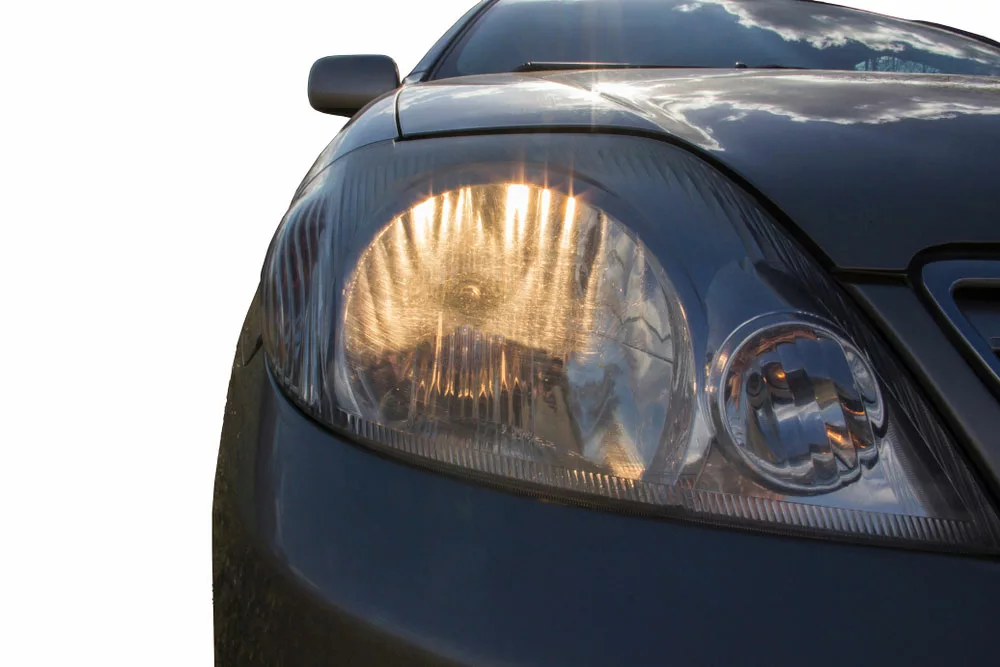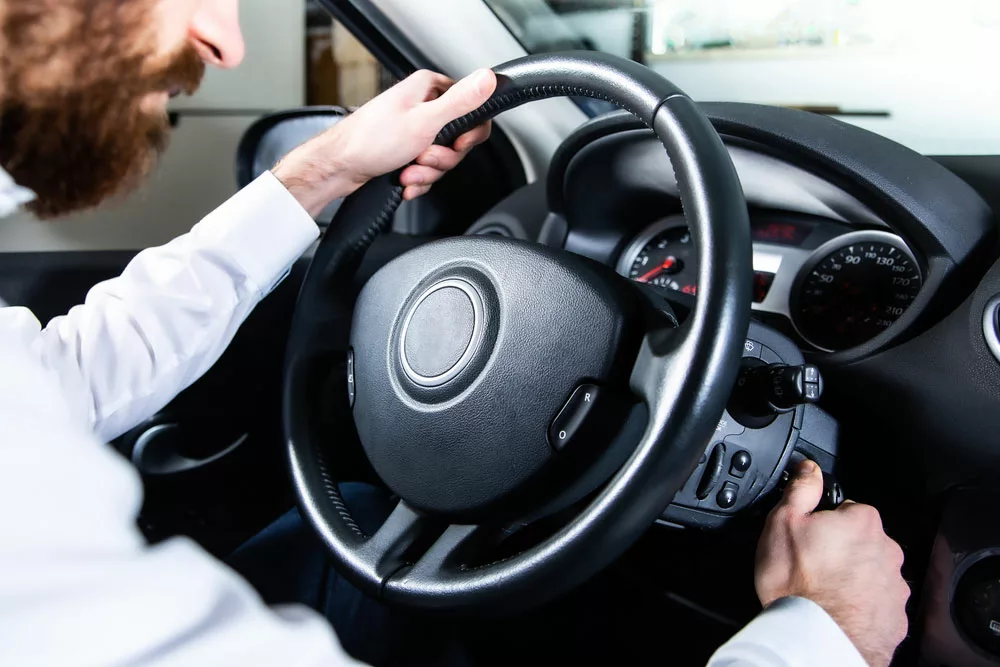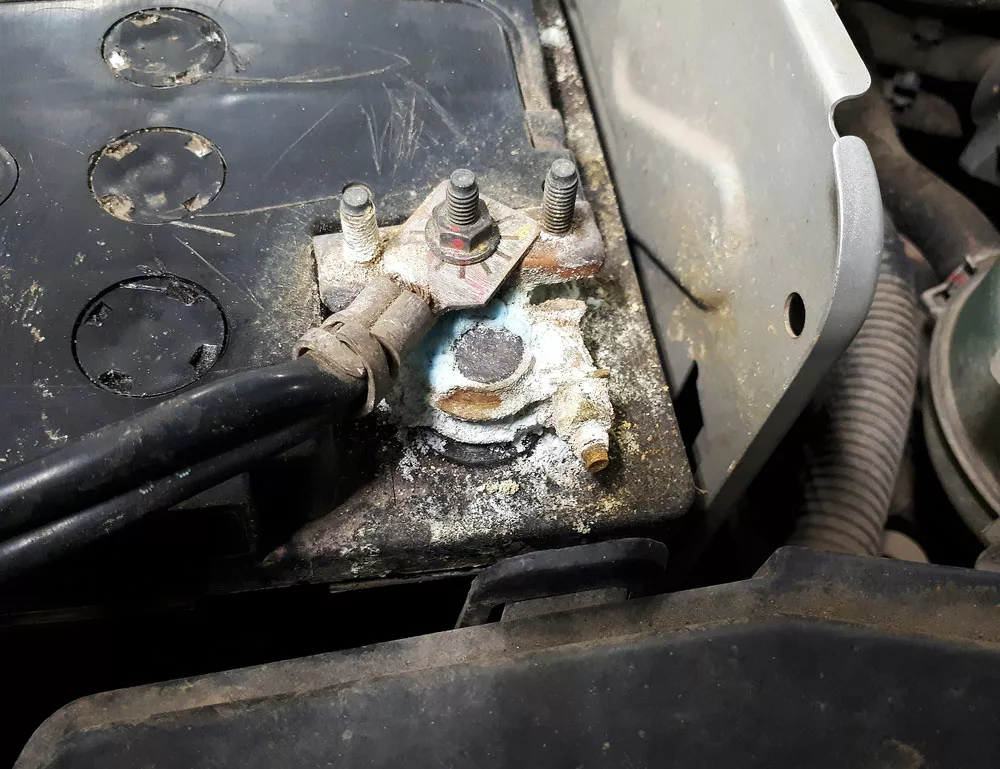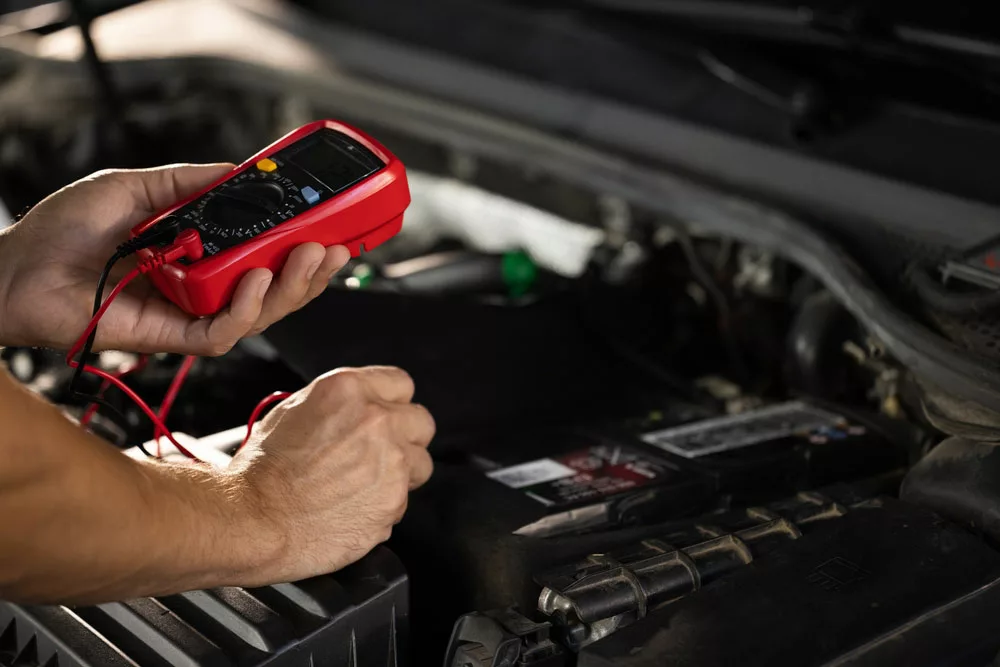You’re on your way to work. You get to your car and start the engine. The engine cranks, but the car doesn’t start. There is a high chance you might have a battery cable loose.
The good news is that you can diagnose bad battery cable symptoms and fix loose cables yourself. We’ll give you a complete rundown on what to check and how to fix battery cable problems.
Table of Contents
- Loose Battery Cable Symptoms
- Bad Negative Battery Cable Symptoms
- How Do You Diagnose a Loose Battery Cable?
- How to Fix Loose Battery Cables
- FAQ
- In summary
Loose Battery Cable Symptoms
Loose battery cable problems don’t just sneak up on you. If you pay attention to your car, you can see the signs of a loose battery cable. Look out for these symptoms.
Dim or Flickering Lights

Weak car headlights
One of the major symptoms of weak electric signals in your car is dim or flickering lights. Erratic flickering or dimming of your car’s headlights is an indicator of a loose positive battery cable or loose negative battery cable.
Your battery may lose power because it is not getting enough from the alternator.
The Car Does Not Start

A driver attempting to start a car
No matter how powerful your car is, it won’t start if it has loose battery cables. The best it can do is crank up. A loose positive battery cable means the car will not get enough electric power to start.
If your car has persistent problems with starting, you might have negative battery cable problems. The car will start once you tighten the loose terminal.
Overheating
A loose negative battery cable creates resistance in the terminal where electricity does not flow as it should. As a result, the friction between atoms and molecules creates excess heat.
Constant resistance can damage the negative terminal and the entire battery.
The Car Battery Shows a Low Battery Voltage
Standard car batteries have a resting voltage of 12.6 volts. Your car might develop starting problems if it drops below 10V. The battery might show low voltage if the loose cable prevents the electric transfer from the alternator.
While the problem might be the battery itself, you might also lose your battery cable.
Bad Negative Battery Cable Symptoms
Sometimes, only one terminal has persistent problems. You may experience all the problems indicated above. However, there are problems you can trace to just a bad negative battery cable.
Flickering Headlights
Erratic flickering of the headlights is a big indicator that you have negative battery cable problems. A damaged negative battery cable does not deliver full power to the headlights. As a result, you’ll have poor visibility from dim or flickering headlights.
Dead Battery
A ‘dead’ battery is a 50-50 case. Your battery might not be completely dead. Still, a bad negative battery cable may prevent it from getting a full charge. The battery will die if the damaged negative cable isn’t fixed or replaced.
The only difference between a bad negative battery cable and a loose negative one is you’d have to replace a bad one.
How Do You Diagnose a Loose Battery Cable?
You don’t have to open your car hood to identify loose battery cable symptoms. However, it would be best if you were hands-on when diagnosing loose battery cables. Follow this step-by-step guide.
- Open your car hood or any other location of your car battery. Check if the respective terminals are connected. The red terminal is the positive end.
- Check any signs of corrosion or buildup. A whitish or greenish deposit on the terminals is a sure sign of corrosion.

Corrosion on the negative battery cable terminal
- Try to wiggle or move the terminal around to check whether the connection is loose.
- Use a multimeter to check the state of the battery. Place the black multimeter lead on the negative terminal, then place the red lead on the positive terminal. A reading below 12V could signal that the battery doesn’t get enough charge.

Mechanic checking voltage in car battery
Warning: Avoid hitting the battery terminals. You risk spilling the battery’s content or damaging the battery.
How to Fix Loose Battery Cables
Once you run the above diagnostics and identify you have a loose battery cable, it’s time to fix it.
- It would be best if you had a wrench. It could be a regular socket or block wrench ranging from 10mm to 14mm.
- You’ll also need a non-abrasive brush or sandpaper.
- Keep some dielectric grease if you want the tightened cables to stay corrosion-free for longer.
Procedure:
- Wriggle the battery cables to check if they are loose. If they are, detach them from the terminals starting with the (black) negative cable. Then detach the (red) positive cable. It’s safer.
- Wipe off any corrosion with a wire brush or sandpaper.
- Set the cables back into their respective terminals and tighten them with the wrench. However, please don’t make it too tight, as it can damage the battery cable.
Pro tip: Corrosion might be recurrent. You can replace the battery and the terminals at this point. Here’s an easy-to-follow guide on replacing the battery.
FAQ
Q: Will a loose battery cable kill the battery?
A: A loose battery cable will not immediately kill the car battery. However, it will lessen the battery’s durability over time. Since the alternator can’t charge the battery, the battery’s potency might deplete to zero charges.
Reviving the battery might be difficult if it goes down to zero charges. You’ll have to install a new battery.
Q: Will a loose battery cable drain battery?
A: Yes, a loose battery cable will drain the battery. A loose battery cable cuts off the battery-alternator connection. Eventually, the battery will use up all its charge and drain to zero.
Q: When should you replace battery cables
A: Replace your battery cables if you notice negative battery cable overheating, corrosion, or visible cable damage.
Q: Will a bad battery cable cause a car to stall?
A: A bad battery cable can cause a car to stall if the battery runs the electrical system. However, the alternator in some models provides enough electrical power to keep the car’s electrical system running.
Q: Will a loose battery cable cause the car to click?
A: A bad, positive battery cable or negative cable can disrupt the circuit, causing the car only to click but not start.
In summary
Car battery and battery cable health are vital for your car. Check your battery cables and terminals, preferably after three months or as often as you like. Contact a certified mechanic for extensive battery cable and terminal damage.
